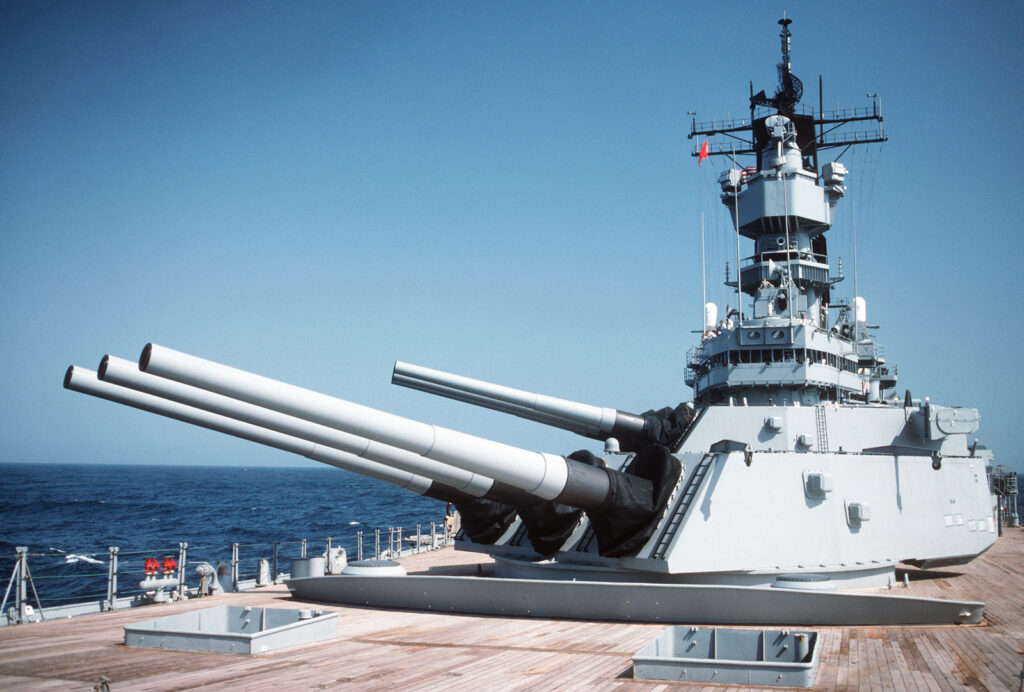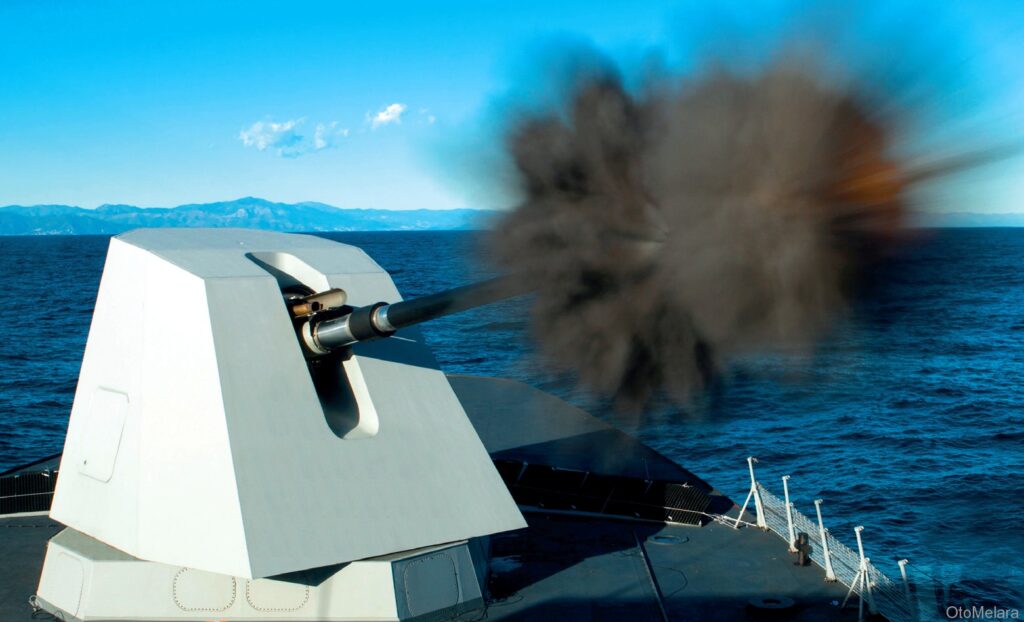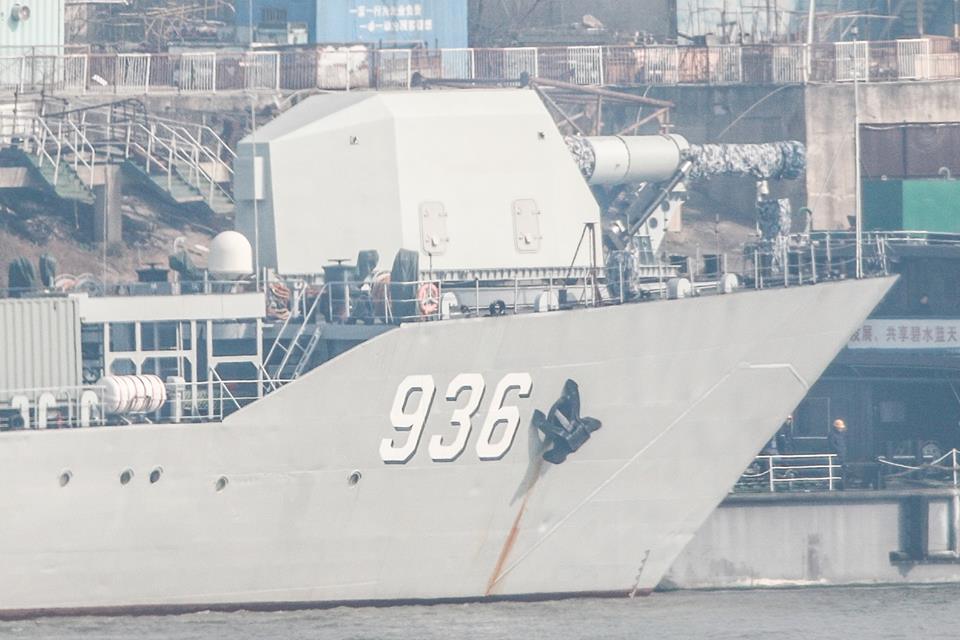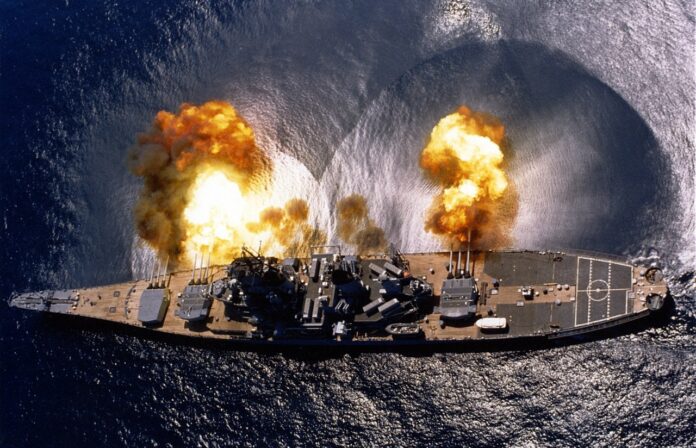The gigantic naval guns of the magnificent armored ships that served in the 2nd World War and the cannons of modern warships are always a comparable point. As a result of the development of technology and the change in naval warfare doctrine, the concept of gun usage has changed, and guns are no longer the primary weapon of ships. Because of radar technology development, smart missiles, and intelligent ammunition, the guns’ shorter range and less accuracy have reduced guns’ importance.
However, as we shared before, the Vulcano smart guided munitions introduction started to change this situation.
Comparison of Naval Guns with past versions:
Modern guns are of smaller caliber than previously, but have much more rapid-fire rates, are immensely more accurate, and have a range of high-tech payloads that make them much more dangerous at the business end. At short range, they’re mighty.
Comparing a modern naval gun to a WW2 16″ gun is pointless, as those are weapons performing a different role. Long-range engagements are now carried out with anti-shipping or cruise missiles or with aircraft. Modern naval guns perform the same function as a 4″ or 5″ gun from WW2 and do a much better job.

Warships don’t only need to be able to kill other warships, and they also need to be able to defend themselves against small boats at short range, apprehend merchant vessels, and fight in littoral environments. The gun is still the go-to weapon for a lot of situations. It’s kind of difficult to fire shots across the bow of a smuggler or pirate with supersonic missiles. The sea laws require a warship to be able to fire warning shots in many situations, so the guns aren’t going away.
Guns can engage multiple small, fast-moving targets at short range rapidly, and modern naval guns have rates of fire that make you amazed.
Besides, smart-fused munitions are now becoming more common. This gives them a lot of versatility and lethality.
That airburst mode is terrifying; chances of killing or wounding everybody on that boat with a single burst would be high, even if it were moving fast and evasively.
To sum up, modern naval guns are pretty frightening weapons. Like other weapon systems, they’ve become immensely more deadly due to advances in fire control and automation. They’re not as big as guns of yore, but that’s because they now rely on precision instead of raw tonnage to get the hurt onto the bad guy. In WW2, bombers would drop vast swathes of bombs all over the countryside in a vain effort to hit their targets; these days, we’d roll in with a single precision-guided bomb and smoke the target. Same with naval guns.

EM railguns:
Currently, there are several studies to develop EM railguns. As we shared in an article before, the USN is said to be fielding these guns on the latest ships; in theory, they should have an effective range more significant than the Harpoon missiles that most destroyers carry. (roughly 220 km) and is so fast and unguided that basically no current countermeasures against missiles would work (granted, obviously preventing opposing ships from correctly diagnosing your actual position might still do the trick.)
The shots fired are much cheaper than a missile, so it’s got that going for them. In the past, the issue was that the gun was so powerful that the barrels would break down after just five shots or so, making it an impractical weapon, however nowadays, the US Navy claims it can withstand up to 400 shots before barrels need to be replaced.
If this works out, it could be the weapon of the future. Suppose it’s only limited by the barrel. In that case, 400 shots are still much greater than the number of harpoons a ship and realistically carry (most Destroyers have no more than a dozen usually.) it is potentially a game-changer in many ways. Suppose smaller, lighter versions could be used, for example. In that case, it might be more or fewer returnships to the age of guns and missiles back to only exceptionally long-range roles as these weapons would be enough of a threat to take down most airplanes and slower missiles, while out range the fast once.

Conclusion:
Naval warfare is not dependent on guns anymore but instead on Guided Missile. Naval gun roles have changed into Close in Defence and Naval bombardment.
WW2 Naval guns were designed to punch thick armor, and the Defensive nature of WW1 give popularity to Fortification. But Modern Ships were relatively light armored, and modern battlefields prefer mobile, maneuver warfare than static emplacement.
But, the primary purpose of Naval guns in the 21st century is AAW. The 5 in/54 in auto mode effectively uses explosive shells to create a debris cloud that will shred many inbound anti-ship weapons. Its engagement range is much greater than Phalanx.



